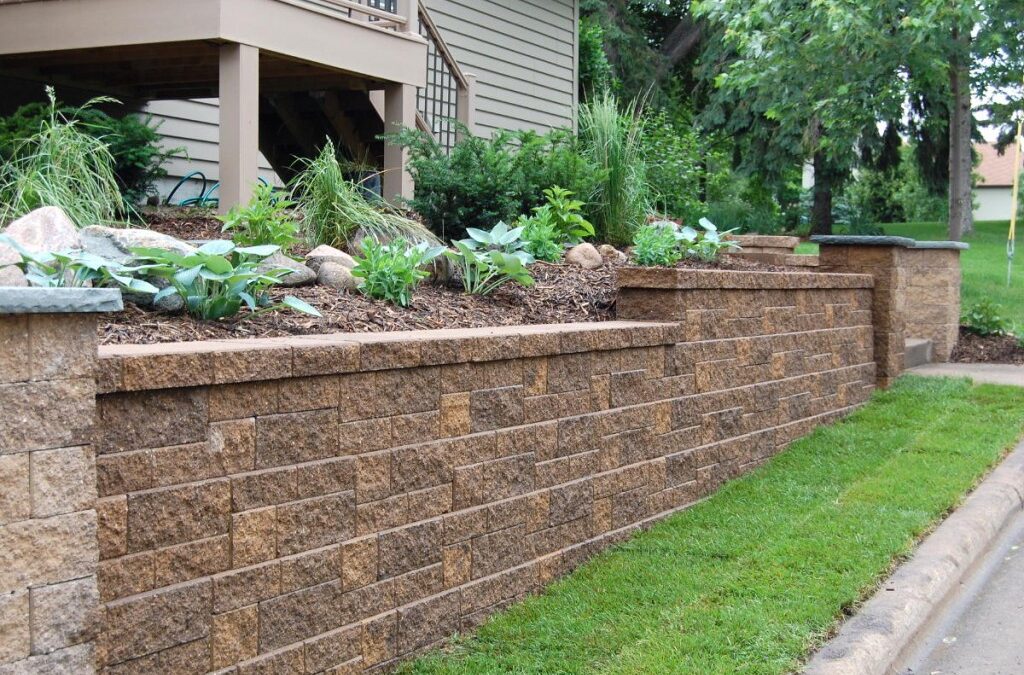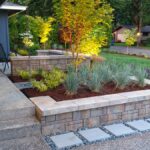You’ve heard of them, seen them, or might already have one in your backyard: we’re talking about retaining walls Minnesota!
Retaining walls are essentially built to provide the structural support your garden needs and turn an area with steep slopes into something much more usable.
They also help prevent flooding and soil erosion as they keep the ground stable and supported, while also providing drainage to the water.
They become part of your landscape design and add a touch of personality to your property.
Retaining walls Minnesota is given a huge task of keeping your property safe from unwanted and sometimes fatal ground movement in your area.
With this purpose and function, retaining walls will need to be really strong, durable, and stable to do their job without fail.
With so many material options in building retaining walls, you are probably wondering which type of retaining wall fits the bill of long-lasting and durable structural support in your garden.
Which Material Is The Strongest For Your Retaining Walls Minnesota?
This article will help you get oriented with some retaining wall types that meet these criteria. Each of them has its different uses, benefits, and issues.
They all do a good job as a retaining wall, but some retaining wall types are stronger than others, but come at some cost.
Concrete Block Retaining Walls
Concrete blocks are a great way to create an incredibly strong and durable retaining wall.
They interlock with each other, creating an excellent support system for the retaining wall.
Most often, concrete block retaining walls Minnesota feature bases made out of compacted gravel, which ensures that this type of construction will remain solid and stable even when there’s an increase in pressure to the wall.
Retaining walls made of concrete blocks can withstand all kinds of weather and will stand to serve its purpose for generations.
Poured Concrete Retaining Walls Minnesota
The other method for building concrete retaining walls is using poured concrete.
Although it is of the same material as concrete blocks, poured concrete, as the name suggests, is built in a completely different manner.
The concrete is poured on-site into position and left to cure and dry for about a month or so, depending on the type of concrete used.
As the method is entirely different from that of piling up concrete blocks, the outcome result for poured is also completely different.
Poured concrete retaining wall is slightly stronger than concrete blocks wall, as solid concrete is naturally denser.
However, structures made of solid concrete tend to be vulnerable to chemical damage and cracking.
- Related topic: What are the Advantages of Adding a Retaining Wall?
Timber Retaining Walls
Timber retaining walls Minnesota are popular because they look quite attractive and can add a feel of humility or approachability to your property.
However, timber retaining walls are made of wood, therefore not as strong as concrete or stone walls.
They also don’t last as long because wood is naturally a victim of time and weather, not to mention of termites!
Although, there have been some effective treatment procedures on the timber that can be done to prevent termites’ attack and extend its life for as long as possible.
Stone Retaining Walls Minnesota
Natural stone retaining walls can be the most beautiful among all types of retaining walls Minnesota!
They blend in seamlessly with the landscape around it, making stone walls one of the most popular options.
Stone retaining walls are also one of the strongest – if not the strongest – material to use for retaining walls.
If built properly, they can last for several decades, while doing its job reliably.
All these good things about stone retaining walls come at a price; stone retaining walls are also one of the most expensive to build.
- You should also read: Do You Know The Purpose of Retaining Walls?
Brick Retaining Walls
Bricks are usually made of clay or shale and are also quite durable, however not as strong as concrete or stone.
One of the good things about bricks is that it needs little upkeep because they don’t change colours
Once set in place, you can leave the brick retaining wall without worrying about how it’d look; years later, it will still look the same as the day you built it.
Rock-And-Wire Retaining Walls
Also known as gabion retaining wall, rock-and-wire retaining walls is one of the more recent additions to the popular types of retaining walls.
While the method itself is quite old, gabion being used for retaining walls Minnesota is only done recently.
It uses a wire cage to create the exoskeleton support and shape to keep the rocks, stones, or rubble in place inside the cage.
This type of retaining wall is commonly used for commercial applications.
The strength of gabion retaining walls solely depends on the strength of the wires used, as the rocks inside the cage are loose and not bonded together.
While they serve their function well and last quite long, they’re not as stable as they tend to move with the ground.
Strongest Material For Retaining Walls Minnesota
To answer the question in the title, the best option to go for in terms of strength and durability are either concrete or stone retaining walls Minnesota.
While other options are strong and durable themselves, these two really stand out.
Retaining walls made of concrete or stone will last for ages, while also doing a great job they’re built for.
Contact us today for a free quote









